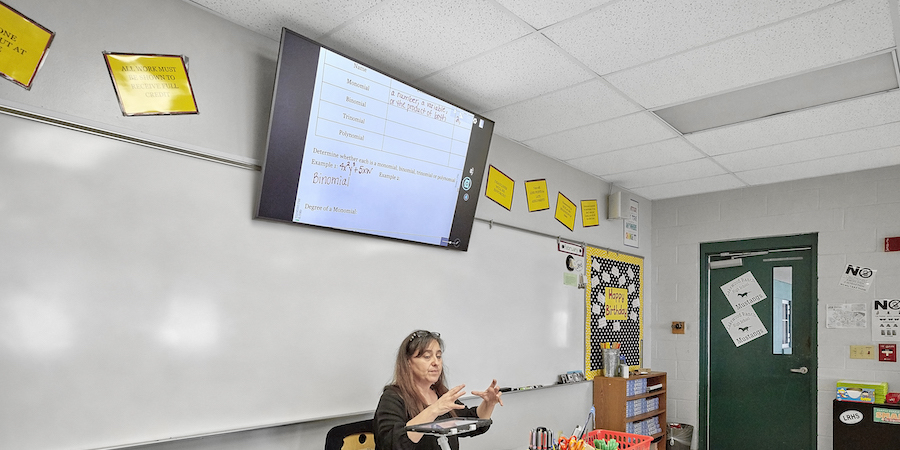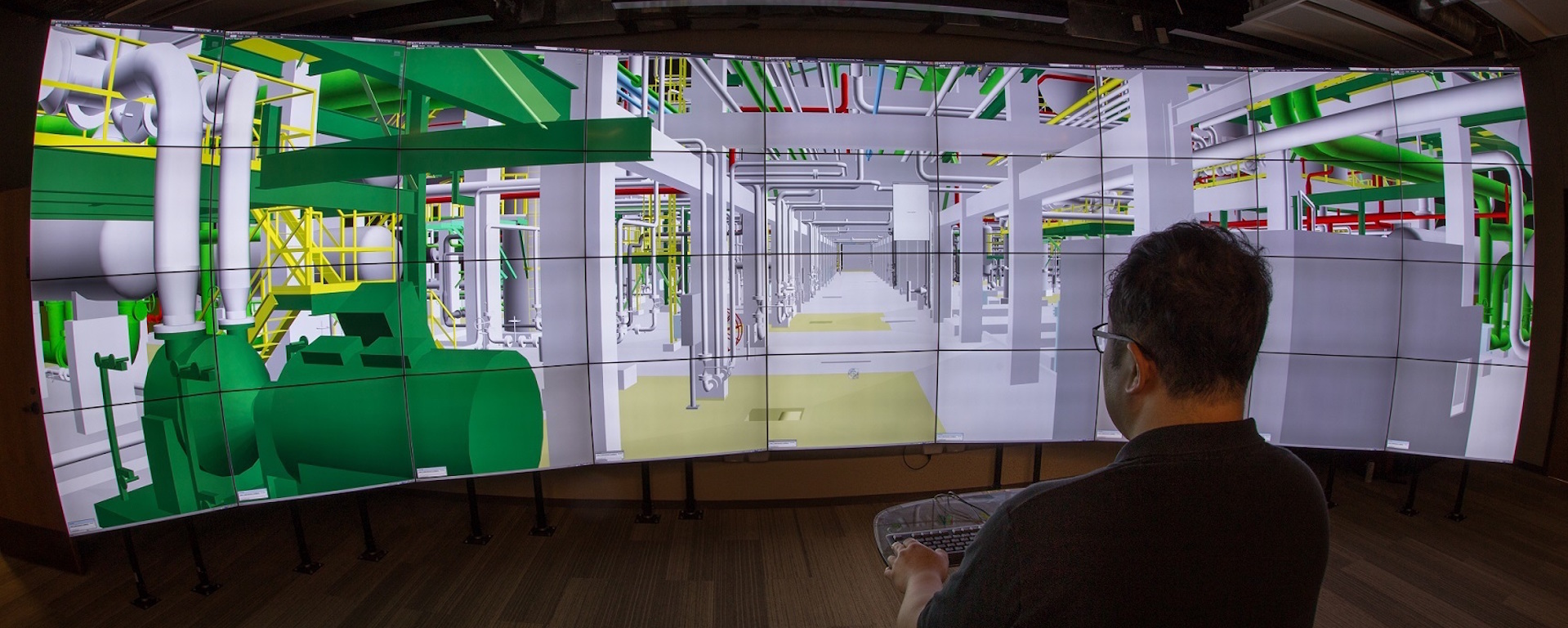Many of us can recall scratchy, static-muddled murmurs of elementary and high school administrators making announcements over the public address system, accepting such antiquated technologies as the norm.
Fortunately, a better way has emerged. Today, educators can install screens in classrooms that easily and effectively serve many purposes over the breadth of a typical school day, including pushing out important messages and reminders.
A public address system gives a school principal or someone else in the building one shot each morning to reach yawning youngsters with key information. A screen in each classroom changes the dynamic from easily tuned-out audio to hard-to-miss visual messaging that can run for as long as necessary. That messaging can also be scheduled and targeted by location and serve many needs, limited only by imagination.
Moving Screens Into Classrooms
K-12 schools have been adding digital signage screens to common areas for years now, including:
- Menu and lunch special screens in cafeterias
- Directories and interactive mapping in the main entry and decision points in large physical footprint facilities
- Screens in main halls and gathering points celebrating great academic, athletic and student group achievements
Costs have lowered for screens and media players, and management software is now simple and easy for anyone to use — from tech-savvy adolescents to digital immigrant administrators.
With digital signage content already being developed and distributed to common areas, the next logical step is to extend that messaging into classrooms. Educators can roll out new screens or make full use of those already in place for learning and collaboration tools.
Reach and Frequency
In the advertising world, brand marketers have for decades talked in terms of reach and frequency. They buy a lot of media in a lot of formats because they want to reach as many sets of eyes as they can. They also buy enough “time” on media, such as broadcast and online, to ensure their messages are seen frequently.
Reach and frequency, when combined, tend to result in messaging that gradually sticks in heads and has the desired effect.
Transform Learning With Digital Signage
See how displays are enhancing the student experience from the lobby to the classroom. Download Now
That may sound vaguely cold in the context of addressing impressionable young minds in schools, but this messaging has a different dynamic and intent than advertising. The only thing most educators and administrators want to “sell” to kids is need-to-know information. The point is that adequate reach and frequency can make an impact.
Students may see messages on screens in common areas like hallways and lunchrooms perhaps once or twice in a school day. Important messages to students — like permission forms that need to be signed and handed in, sign-up deadlines for clubs, tryouts for teams and notices about special events — can all run passively on classroom screens, all day long.
They’re not meant to captivate the attention in classrooms that should be focused on listening and learning. The screens are just there, and through repetition, messages will stick.
Screens as Lifesavers
Displays in classrooms also have a powerful role in classroom safety. Sirens, bells and alarms can jarringly alert students and educators of some sort of campus emergency, but screens tied to in-school networks and cloud-based systems can take the next step by not only alerting, but also explaining what the emergency is all about and what to do.
Software can often tie into emergency notification systems, or trigger messages at the push of a button. In the case of a weather emergency, like a tornado, within seconds of an alert being issued, it can be up on classroom screens directing everyone where to go for safe shelter. In the event of a campus intruder, as soon as the situation is identified, the main office can instruct teachers and students what to do, such as lock doors and shelter in place.
Designing Content Plans
Smart displays with built-in media playback capability and wireless networking reduce the installed footprint of a stand-alone classroom display to one cable for power. They’re easily set up and managed, with a variety of options for management software.
Many software platforms come with content templates that allow educators or student volunteers to easily produce polished, professional designs for everything from celebrating academic performance to hyping up students for prom night.
Standalone digital signage displays can easily be multipurposed to act as presentation tools or for showing video streams — whether a video showing rainforest life or a feed from a remote educator.
Existing Platforms, New Programs
Many classrooms already have interactive displays that are used by educators for learning and collaboration — from full e-boards that take the place of passive whiteboards to Samsung’s innovative Flip, a digital take on old paper flipcharts. There may be classrooms where these technologies are steadily in use, but often they’re just part of the teaching tool set. When idle, displays can be set to the equivalent of a screensaver mode, cycling through a playlist of digital signage-driven messaging.
Technology is increasingly a central part of classroom teaching — using everything from tablets that can push content to larger classroom screens to touchscreens that allow the youngest pupils to finger paint without needing to clean up after.
But school life for both educators and students is also about celebration, recognition and effective communications. Most students may know about the volleyball team getting a big win the previous night, but it’s an equally big deal when those students win a science fair, or a teacher is honored by their peers.
PA announcements and print-outs on corkboards may be the start, but the way to get a student population informed, excited and motivated is through omnipresent screens.
Learn more about digital signage’s ever-growing presence — and need — in the classroom in this free white paper. Explore the ways signage is already informing students and staff in this 360-degree video.








